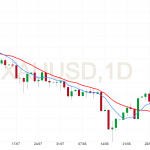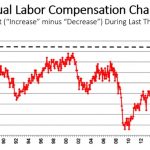With everyone in the Modern Family back in bullish phases-albeit, some need a second day to confirm-analysts should be relieved, right?
Yet, more than twice over the weekend, I read predictions calling for a Recession in about 2 years.

One prediction that catches everyone’s attention is that of Ray Dalio’s, head of the world’s largest hedge fund.
Mr. Dalio, on February 26th said, that the U.S. is in a “pre-bubble phase,” with a 70% chance of a recession by 2020.
Then, an article in Business News, published by Reuters, cited concerns by the Federal Reserve.
“Federal Reserve policymakers are fretting that they could face the next U.S. recession with an arsenal of policies little different from that used in the last downturn but robbed of much of their punch because interest rates are still low.”
In the last recession of 2007-2009, the Fed brought rates down to zero plus bought $3.5 trillion in bonds.
Currently, with rates 1.25-1.5%, the Fed believes raising them any further than 2.75% will slow the economy.
Will an overheated economy create more harm than good?
With large tax cuts and government spending that will drive the US debt up, up, up, it’s no wonder the Fed is worried.
Last week, the dollar rose off of the recent lows. Remember though, in UUP, the dollar bull ETF, a monthly close under 23.48 confirms a break of a multi-year holding pattern.
Therefore, we start this week with the same worry I have had for months-rising rates and a falling dollar in an overheated economy.
The chart shows the TLT or 20+ Year Long Treasury Bonds.
The dark blue line is the 23-month simple moving average. The cyan line is the 80-month SMA.
Other than a brief period at the end of 2013 beginning of 2014, the price has not closed a month under the 80-month MA since 2011.
For those unfamiliar with how TLTs work, the higher the price, the lower the rates and vice versa.
With February nearly over and the market enjoying a run for the January highs, TLTs look like a decline in its infancy stage.













Leave A Comment